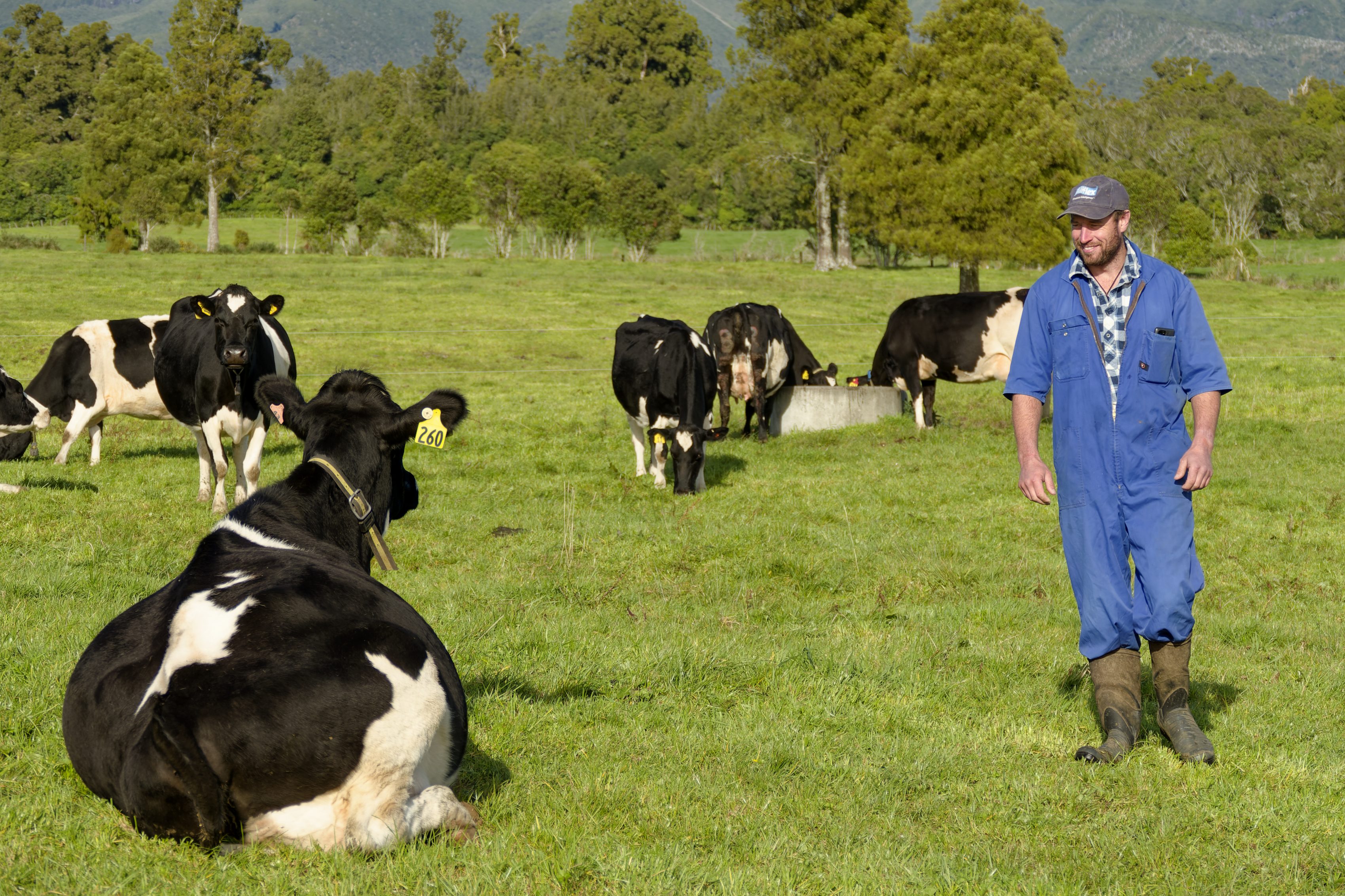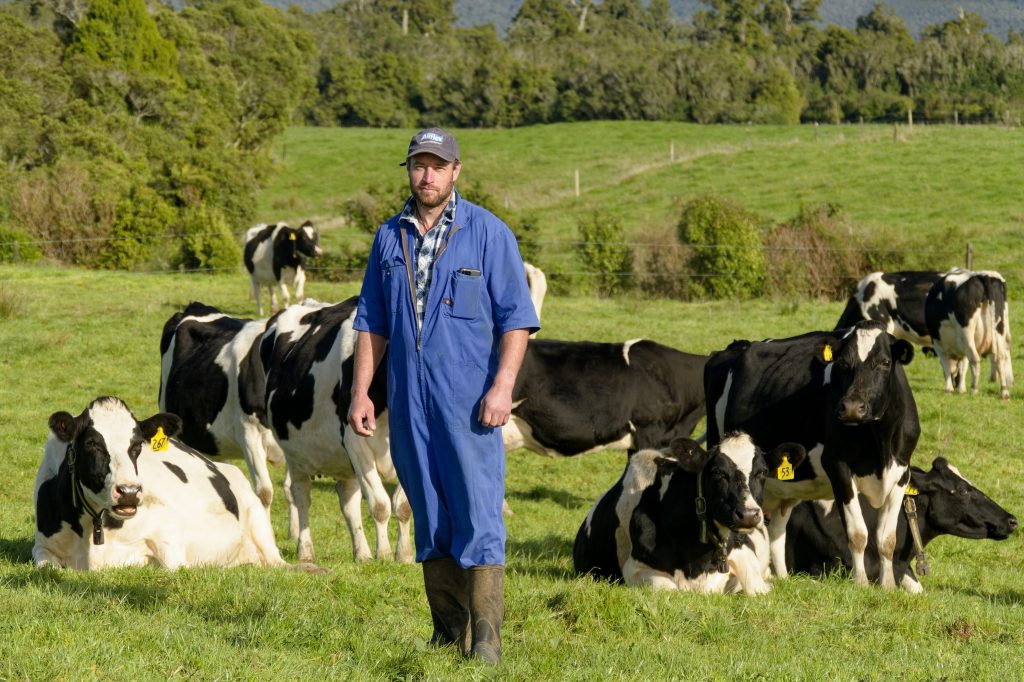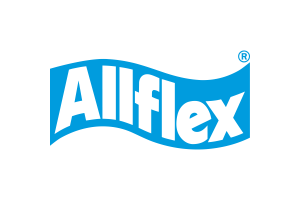

Kane Brisco | We know cow
Farming just under the bush that rises up the mid slopes of Mount Taranaki might seem a picturesque location, but contract milker Kane Brisco measures annual rainfall in metres.
| Location | Herd Size | Farm Size |
| Inglewood | 305 Friesian cows. | 132ha effective, 142ha total area. |
Benefits
• More proactive decision making
• Better detection of heat stress
• No more ‘lost’ cows
• Heat detection now a one-man job
“We’re right on the boundary of Egmont National Park so we’re as far up the mountain as you can farm. Our biggest farming challenge is the 4-5m of rainfall the farm gets each year,” he says.
Most of the soil is free draining ash over metal and it slopes away, so a lot of the surface water runs off. But the rainfall heightens the risk of animal health issues like lameness and mastitis occurring, so Kane has to be vigilant for early warning signs.
He is in his first year of contract milking for the farm’s owners Hamish and Emma Lawn and expects to produce 147,000kg milk solids for the 2022-23 season, a pleasing improvement on the previous season’s result under different management.
Two Herd Homes are a haven for the cows especially in winter. Most cows calve in one of the homes so they are monitored closely through that risky period.
Kane had seen cow monitoring technology in action at other farms and when he found a source of second-hand Allflex collars, the farm owners agreed to buy them and he contacted Allflex to start the installation process.
The SenseHub Dairy hardware with Allflex collars was operational from November 12 last year, about 14
days into the 2022 mating.
He immediately stopped tail-painting but continued monitoring cows for another two weeks on the stand
to double-check each one showing oestrus in the Dairy software was also backed up by rubbing of the tail paint.
“I was blown away. When the data on heats started to come through, it was 100% accurate,” he says.
Tag numbers still have to be entered manually into the auto-drafting gate over mating, but the shed became a one-man operation overnight once the collars were fitted and the SenseHub system began collecting data.
The herd empty rate from the 2022 mating was only 7%, a result Kane believes was heavily influenced by the heat detection capability of the collars and movement data they collect.
The six-week in-calf rate was 74% and he adopted a full artificial insemination strategy with no back up bulls.
One of his big motivations for installing cow monitoring was to reduce the extra labour unit he needed in the dairy shed each morning during mating.
“We’ve got a 35 bale rotary shed with auto-drafting so it’s set up for a one-man operation. But before
the collars went on, my worker had to be in the shed through mating with me,” he says.
“It’s pretty full on here with 305 cows in two Herd Homes, and it’s quite a big cost having two people in
the shed every morning,” he says.
Installing collars had an immediate effect on workload for them both. “It was a massive relief because the
collars mean one of us can have a sleep in each day.”
“I’ve been dairy farming for 14 years and I’ve never taken time off during that mating period until now. Farming’s like an ultra-marathon but this sort of technology is game changing because it frees up time
for me to spend with my family, reduces fatigue and makes everything more enjoyable.”
Kane was also keen to improve overall herd health by picking up cows under stress earlier than through
observation. Although he takes pride in his own stockmanship skills, he believes the collar data gives
him 24-48 hours earlier warning and he can intervene much quicker.
When a cow shows up with a health alert, the policy is to draft her out next milking and check her for any
obvious signs of illness or disease. Her temperature is taken and a paddle test is done on a sample of her
milk. Most receive an anti-inflammatory injection and return to the paddock, but those with elevated
temperatures may require a check by the farm’s veterinarian.
“The anti-inflammatory injections are amazing. Most cows go back to the paddock and their rumination
levels rise almost straight away,” Kane says.
“With the SenseHub system operating, it means we can take cows out of the milking herd earlier, give
them the TLC they need to recover and get them back into the main herd quicker too.”
Kane’s collar system is also set up to send an alert if a cow misses being seen at the shed for 24 hours
and this feature has picked up three cows that had gone missing.
“Two had found their way into drains and were less than a day away from dying. The other cow had
slipped through a fence into the bush and may not have found her way back to the herd.”
“But losing three cows at $2k each is expensive, so that’s been another win from having the collars on.”
Through last summer he also monitored heat stress in the herd using the rumination data. By adjusting
feeding times in the Herd Homes, using the sprinklers in the holding yard before milking and changing
afternoon paddocks so they were closer to the shed, he was able to minimise it.
At calving next spring, Kane is planning to set a rumination threshold for cows to reach before they move into the main milking herd after their calf is born.

“I was blown away. When the data on heats started to come through, it was 100% accurate.”
Kane Brisco
“Just having that extr a data s et can really back up your decision whether that’s a feeding or health issue.”
Kane says the back-up service from the Allflex team has been superb.
“They bent over backwards to help us all the way through the installation. I can text my trainer with a question and she’s usually back to me really quickly with the answer.”
“They are happy to come to the farm to upskill us, and the hotline you can call anytime from 4am to 7pm and
someone will always answer the call.”
After just a few months with the collars on his herd, Kane says it would be difficult to move to another farm to manage a herd without them.
“I’d much rather go to a place that has collars on the cows. It would be a selling point for me in the future if
I ever move,” he says.
He likes the phone app which allows him to check into the data in just 5-10 minutes a day.
“If something’s not right with a cow, you can match that up with what you’re seeing visually in the paddock or the Herd Home.”
“I can be anywhere in the country, check on my phone and know if I need to make a phone call or not. I’m
always in control but I don’t need to be at the farm to make sure anymore.”
Thanks to NZ Farm Life Media for working with us on the We know cow series to deliver you this in-depth analysis on Allflex / SenseHub Monitoring Solutions. Read articles from NZ Farm Life Media’s Dairy Exporter here.
If you would like our indicative pricing flyer emailed to you and or to book your farm visit, please complete the below enquiry form.
Monitoring Solutions – Branding Explanation
The brand names for our monitoring solution have been subject to changes since recording our videos and farmer stories.
MSD Animal Health, a division of the MSD group of companies under Merck & Co., Inc., Rahway, NJ., U.S.A. and a global provider of animal health pharmaceuticals and technologies, purchased the Allflex New Zealand business in 2019 (including certain SCR-branded animal monitoring technologies). At the time, Allflex animal monitoring solutions were known as Allflex collars and the relevant desktop-based software was HeatTime Pro (both of which you may hear about in this video). The dairy monitoring solutions are now branded SenseHub® Dairy – MSD Animal Health’s desktop-based software is now known as Dataflow II™ and cloud-based monitoring software is known as a SenseHub® Dairy solution. Allflex remains the brand name which represents our identification solutions.

